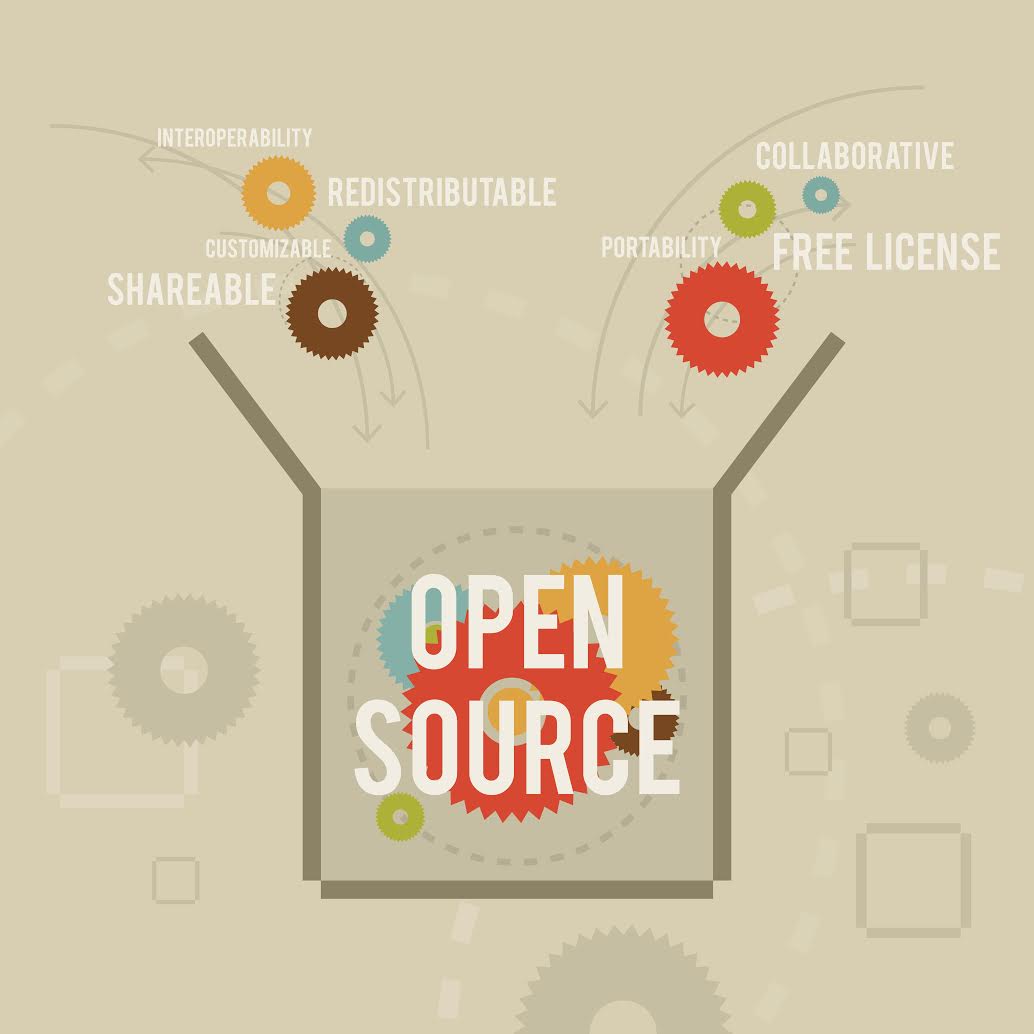Open source technologies and solutions are now an integral part of just about every enterprise. In fact, an average commercial software project now has more than 100+ components or 50% of its components in open source.
Open Source Technology Trends
Many factors contribute to the widespread adoption of open source technologies, including the open nature of the code, it's free nature, ability to draw the power of the community, faster time-to-market, and more.

Here is how the adoption of open source technology trends.
The Battle against Vulnerabilities Reaches the Enterprise
Open-source projects are not free of vulnerabilities. Two out of every three commonly used commercial applications are known to contain some form of vulnerability or other. The extent of damages increases significantly with new and emerging technologies such as artificial intelligence (AI) and the Internet of Things (IoT). Such vulnerabilities leave systems running on open source susceptible to attacks, and create a trust deficit. Cyber attackers have indeed started to exploit such vulnerabilities in a big way, with attacks on open source technologies increasing by 20% in 2017.
Open source stakeholders are however now rising to the challenge, taking up the gauntlet to identify vulnerabilities in open-source code on a regular basis. Unlike the past, they take the lead in developing patches proactively, improving the security of the codebase. Enterprises are now more willing than ever before to contribute to such common events.
At another pane, enterprises have started embracing open source web application penetration testing tools such as Grabber, Vega, Zed Attack Proxy in a big way, to unearth common vulnerabilities such as cross-site scripting, SQL injection, and more. Such increased adoption has resulted in the further development and maturity of such tools.
Analytics Get Bigger and Better
Big Data is already a rage. However, in the scramble to get data, several enterprises neglected the purpose behind collecting such data. The realization has however struck in, and the trend now is towards collecting actionable data, on which business intelligence rests.
There is a corresponding rise in open source analytic solutions, especially cloud-based solutions. These analytic engines have started to draw on machine learning and artificial intelligence in a big way. Enterprises using these solutions gain a competitive advantage in getting first-hand actionable insights, on which they may make informed decisions.
A big application of analytics has been in the IoT space, where data from sensors are being put to good use to improve accuracy and make systems more efficient. While big businesses, such as oil and gas industries, now reap the benefits, other sectors have started to join the bandwagon slowly but surely. For instance, using sensors to monitor patients remotely, and tracking medication orders is now a norm, cutting across healthcare providers.
While Hadoop retains its dominance as the tool of choice to create Big Data solutions, upstarts such as Docker’s Spark, Google’s Kubernetes and Mesos are fast becoming popular and viable alternatives. These new tools gel in perfectly in a containerized environment.

The World of Containers is in the Middle of a Big Churn
Containers, which allow packaging and porting applications, started off as a fad but is now a key component of an enterprise’s open source architecture. Containers containing micro-services allow businesses to leverage highly portable assets or resources with a high degree of scalability and stability, at affordable costs.
The popularity of containers is for a large part owing to Docker. Docker containers offer an innovative approach of virtualizing the OS and splitting it up into virtualized compartments, thereby allowing placing and running chunks of code in any system where Linux is running. A significant open-source development in 2016 was tension between Docker and the wider open-source community, with the commuting accusing Docker of not being sufficiently open and compatible with other open source platforms. Come 2017, Docker has made significant changes and is now embracing open source in a bigger way. Docker releasing one of its core container components, as an independent open source project, drives home this point.
However, Docker is also facing stiff challenges in 2017, especially from upstarts providing a container-as-a-service solution. Kubernetes is on way to become the de facto industry standard for container orchestration in 2017. Enterprises hitherto faced difficulty in setting up and using this otherwise powerful tool, but now the increasing adoption of container-based PaaS systems, such as RedHat's OpenShift and CoreOS Tectonic is helping enterprises embrace Kubernetes.
Enterprise DevOps Adoption Intensifies
Until not too long ago, DevOps was considered as a drag. However, of late, the DevOps approach and accompanying tools have become mainstream.
The increased acceptance of DevOps is not just because of the realization of the many advantages on offer. IT companies were until now struggling to understand the exact definition of DevOps. In 2017, the concept has finally reached stability, and can now be identified as a static set of principles and practices.
The increased DevOps adoption has a spin-off benefit in fueling automation of software delivery and infrastructure changes. Developers would now be able to spend more time coding and save time setting up the infrastructure.
OpenStack Grows Even More Popular
OpenStack, the cloud operating system which enables effective control over large swathes of computing, storage, and networking resources throughout the data center, through an easy dashboard, is now a favorite of open source developers. Its maturity, ease of use, ability to integrate well into a heterogeneous infrastructure and its inherent cost-saving capabilities enable the tool to sustain its popularity, even as new tools emerge.
OpenStack, by taking the resource layer out of the VDI stack, and separating components technically, infuse flexibility, make IT resources future-proof, and allow enterprises to mix and match hosting environments as required. A developer using OpenStack, for instance, could run some RDS sessions in Azure, place a few virtual desktops in AWS, conjure up a private cloud in OpenStack, and wrap it all together with vSphere servers that already reside in the enterprise data center.
In 2017, more and more enterprises are adopting OpenStack as their open-source software of choice, to power private and public clouds, and empower admins.
The Biggies Hold their Ground in the Face of New Onslaughts
Linux still holds its ground as the leading and most widely adopted open-source project. Companies leveraging Linux to roll out commercial applications have proliferated, but the big names, including Red Hat, Ubuntu, and SUSE hold their ground. Git retains its popularity for its hugely successful GitHub and GitLab, with most developers using it for easy version control and change tracking capabilities. In the database space, MySQL retains its dominance as the most popular open source tool. Innovations, such as “NoSQL” database technologies, which are non-relational databases, have also become popular, for parsing unstructured data. The popular NoSQL databases include MongoDB and Redis.
Another red-hot area in open source is code integrating continuously and seamlessly with other platforms. Tools furthering such ends, such as Jenkins, Maven, and Artifactory are the ones to watch out for in the new future.
While the world of open source is always in a state of continuous churn, open source itself is in for the long haul. In fact, CIOs of major global companies now rely on open-source technologies rather than proprietary code to power their infrastructure. Successful companies tie up with innovate and result-oriented developers, who keep themselves abreast with the latest and emerging technologies, and deliver cutting-edge technologies to further the cause of the enterprise.
Reference:
- https://techcrunch.com/2017/04/07/tracking-the-explosive-growth-of-open-source-software/
- https://www.a10networks.com/blog/10-open-source-trends-2017
- https://www.sdxcentral.com/cloud/containers/definitions/what-is-docker-container-open-source-project/
- https://techbeacon.com/7-devops-trends-watch-2017
- https://www.leostream.com/hubfs/Trends%20Report%202017.pdf?t=1490216808066

